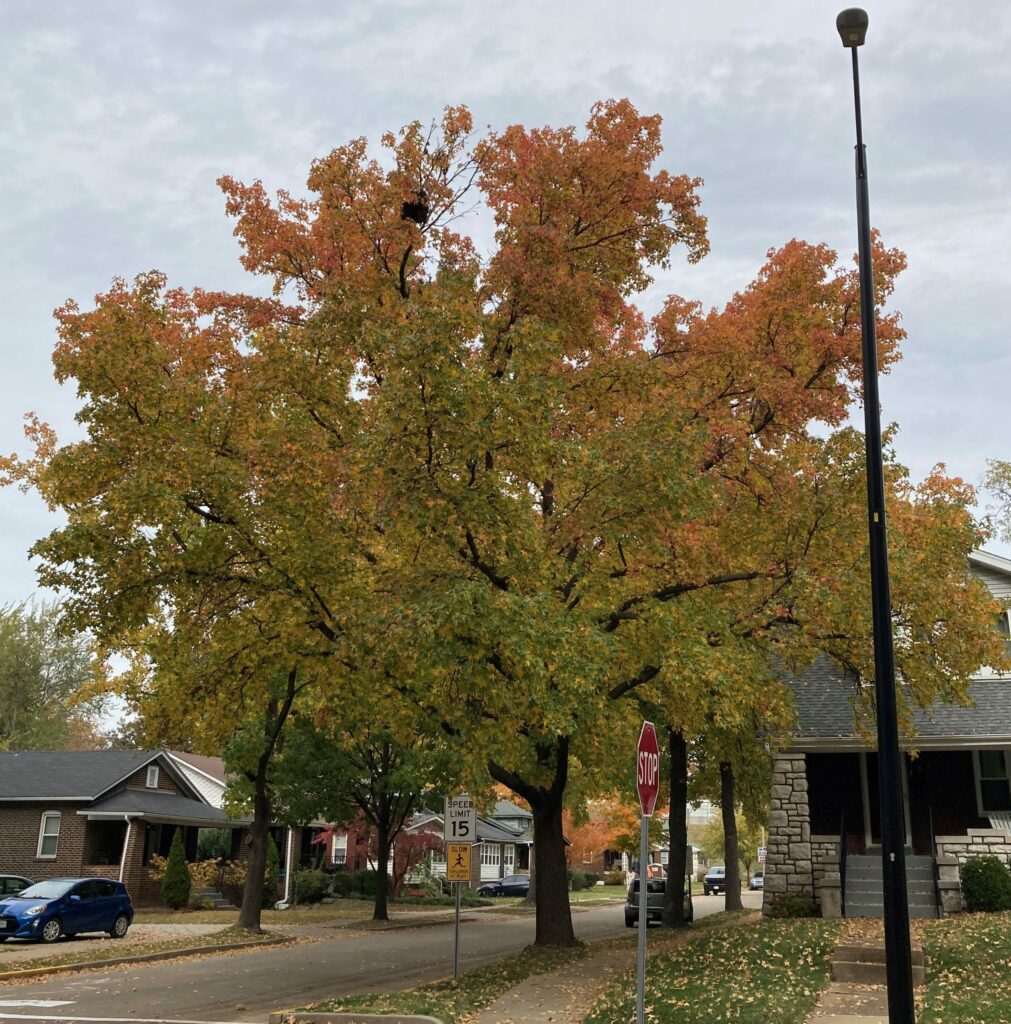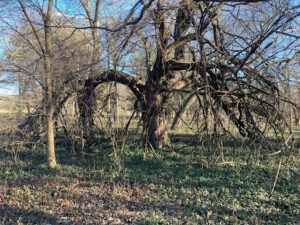The redheaded stepchild of the urban forest, Sweetgum (Liquidambar styraciflua) is, based on my experience fielding complaints from the public, the most hated tree in our region. Even ecologically destructive species such as the tree of heaven and Callery pear receive less ire. And we all know why it’s so hated; those spiky little “gumballs”, the species’ seed pods, that litter the ground underneath its canopy.
The gumballs are a nuisance, but they hardly justify removal of large, healthy trees, or the absurd difficulties of treating to prevent seed formation (such treatment requires spraying a highly corrosive chemical over every flower on the tree, just as they are fully opened. Just think about that for a minute). I have never heard someone suggest that acorns or pine cones are potentially lethal, and yet they present similar trip hazards. Gumballs are particularly offensive if you’re barefoot, but how many people stroll their neighborhood streets barefoot?
In many ways, sweetgum is otherwise the perfect urban tree. I have never seen a diseased specimen. They grow quickly to a height of up to 75’, spreading to 50’, and tolerate all manner of abuse, pollution and soil compaction. Native to bottomlands, the only environments it dislikes are high, dry areas. Sweetgums are particularly good at removing particulate matter from the air, because they have so much surface area – the bark is corky and ridged, the leaves always plentiful, the crown always full, and even those annoying balls are filled with tiny valleys and pockets. All the more places for pollution to accumulate, and thus be removed from the air.
This surface area is a double-edged sword though – it causes sweetgum to drop branches quite easily. All of those nooks and crannies that are so great at collecting pollution are also great at holding water weight. The wood is soft, and so it doesn’t take much to cause even perfectly healthy branches to fail (and healthy they always are, because again…sweetgums just never seem to get sick).
I will defend this tree. It is a fine ornamental native species with excellent ecological benefits, a favorite spring food source of the Carolina chickadee and American goldfinch, great for carbon sequestration, stormwater abatement and the aforementioned particulate pollution interception. But I will also never recommend planting one in residential areas. Where this tree excels is in wide open parks. The gumballs disappear into the thick turf and soft soil, and its crude branch-dropping habit does not present a hazard. When those offensive traits are mitigated, its true beauty shines, and people may appreciate it, if perhaps begrudgingly so.
This beauty is no time more evident than in the fall, when it is one of the most glorious trees during leaf change. It has the unique ability to display nearly every color possible – yellows, reds, purples and every mixture thereof, all on one plant, on one branch, sometimes on one leaf. Like the motley suit of a jester, it can be almost dizzying to look at (the interior leaves turn from yellow to red and purple more slowly than the outer ones, giving the colors a kaleidoscopic depth). Sweetgum has been badly misused, but with rare exceptions, every sweetgum you see along a street or in a yard was planted there by a human. So who should we really be cursing when we step on one of its little spiky seed pods?
Pictured: Sweetgum in its native habitat: next to sidewalks, streets and walkways, overhanging gutters. Note the wonderful fall color!




